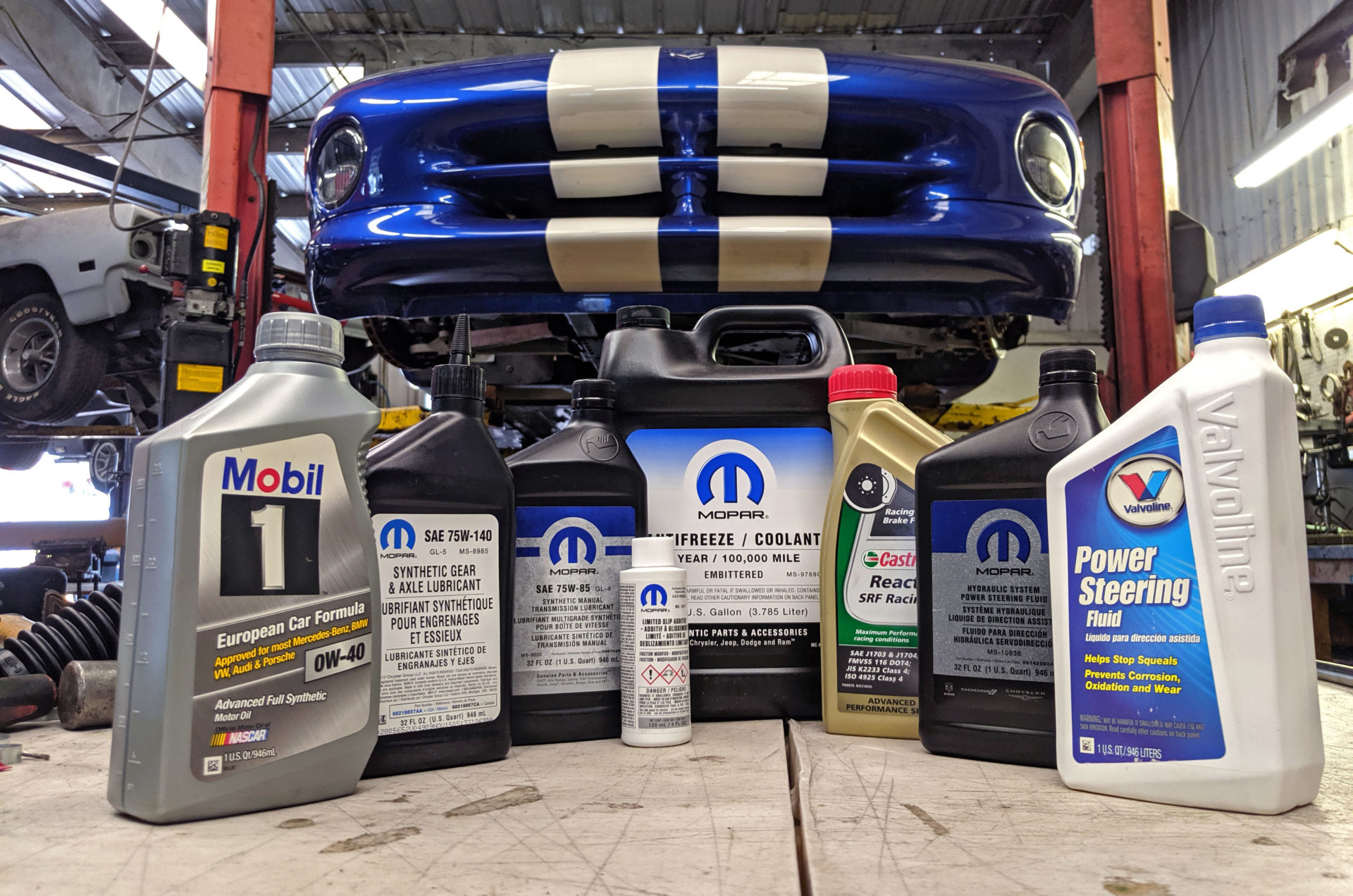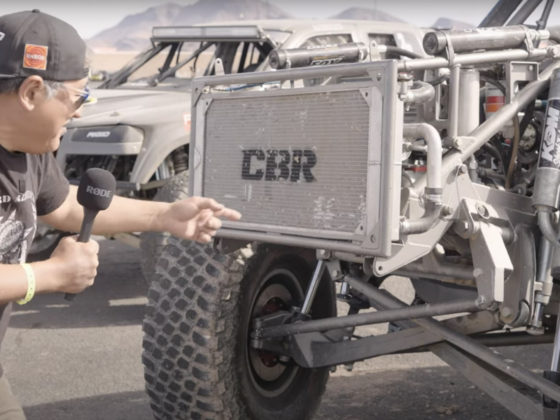 We located the coolant overflow tank on the passenger side of the car.
We located the coolant overflow tank on the passenger side of the car.
 Once the coolant was drained and the plug reinstalled, we filled the car back up with the proper orange Mopar Coolant, Part Number: 68048953AB, MS-9769G.
Once the coolant was drained and the plug reinstalled, we filled the car back up with the proper orange Mopar Coolant, Part Number: 68048953AB, MS-9769G.
The factory fill is Mopar Orange “HOAT” Coolant. HOAT stands for Hybrid Organic Acid Technology, which combines the older Green Inorganic Acid Technology (IAT) used in many older cars and lasts around 30,000 miles, and the newer Organic Acid Technology (OAT) which can last upwards of 150,000 miles.
IAT is very anti-corrosive but needs to be changed regularly, otherwise it turns acidic and starts to eat your radiator and engine from the inside out. OAT lasts much longer but doesn’t protect your engine against corrosion all that well. HOAT is a hybrid of the two and the best of both worlds. These coolants DO NOT mix well or work together and it’s important to stick with whatever coolant your car was designed to use, and change the fluid accordingly. For us, it is HOAT coolant.
 The brake fluid was next. We sucked the old fluid out of the reservoir and then filled it up with Castrol SRF Fluid. This is arguably the best brake fluid on the market and is used by many professional race-winning teams around the world.
The brake fluid was next. We sucked the old fluid out of the reservoir and then filled it up with Castrol SRF Fluid. This is arguably the best brake fluid on the market and is used by many professional race-winning teams around the world.
SRF has a high Dry boiling point of 590*F but more importantly, it has one of the highest Wet boiling points of any fluid on the market at 518*F. The wet boiling point is a more realistic measure of a brake fluid’s performance unless you are changing the fluid every weekend at the track.
Because SRF’s wet boiling point is so high, it does not need to be changed or bled nearly as often as many other racing brake fluids. Even at twice the price of some other fluids, bleeding it less than half as often makes SRF the less expensive option. If your calipers are getting hot enough to boil SRF, you likely have bigger problems. It’s my go-to recommendation.
 We bled the front brakes.
We bled the front brakes.
Quick Reference:
Page 1 – Trans Chassis Plate Removal
Page 2 – Trans Fluid Drain & Fill
Page 3 – Diff Fluid Drain
Page 4 – Diff Fluid Fill, Coolant Drain
Page 5 – Coolant Fill, Brake Fluid, Front Brake Bleed
Page 6 – Rear Brake Bleed, Power Steering Flush
Page 7 – Power Steering Fluid & Engine Oil




6 comments
Have any idea why ATF was specced for a manual? That seems pretty ridiculous to me.
Because the transmission was design to use ATF for good shift quality in cold conditions, compatibility with synchronizer friction materials, and minimized parasitic drag to maximize power to the wheels.
They probably didn’t want to develop a specific MT fluid since most of their vehicles are AT. It just seems a bit lazy to me, especially with a high horsepower halo car like the Viper.
I have no idea what the viscosity is on the Mopar MTL, but I bet it’s higher than Dexron III:
“Manual transmission fluid, as noted earlier, tends to be a higher viscosity than automatic transmission fluid. This helps the fluid develop a thick, durable protective film.”
What about clutch fluid?
The same Castrol SRF as the brakes.
The passion and dedication you have for this project shine through your writing, and it’s contagious. I can’t wait to see what’s next in store for Project Viper. Keep up the fantastic work, and thank you for sharing your journey with us!